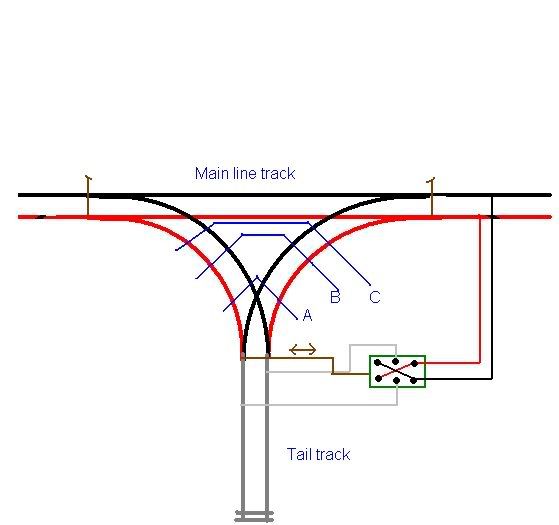Hi guys, I just want to confirm something. I'm progressing on my first layout and I have a yard and town at each end of my basement, and each town has a Wye for turning steamers around, I'm running DCC super empire builder which I installed near the middle of my layout so I get good power feeds to either end of my basement, this is where the wye's are, now I know I can buy auto reverse boards for my DCC, or use DB150 of which I would need 2 of them or have to run more wire.
To be simple can't I simply hook a DPDT switch to the points of the Wye turnout so the power changes to match the correct approach track with the throw of the switch?
To be simple can't I simply hook a DPDT switch to the points of the Wye turnout so the power changes to match the correct approach track with the throw of the switch?


